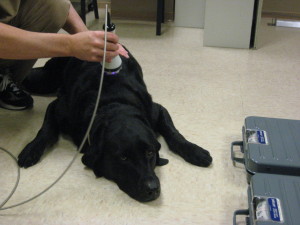Posts Tagged ‘cats’
What To Do When Your Pet Is A Handful – And You Are Leaving Town
 You are about to experience the trip of a lifetime, but there is only one problem. You have a pet that is very unruly and it is hard to leave it behind because all your friends and family scatter when asked to take care of it. Have you ever had that scenario? I am sure a few of the readers have. So what options are out there that will give you piece of mind that your pet will be taken care of?
You are about to experience the trip of a lifetime, but there is only one problem. You have a pet that is very unruly and it is hard to leave it behind because all your friends and family scatter when asked to take care of it. Have you ever had that scenario? I am sure a few of the readers have. So what options are out there that will give you piece of mind that your pet will be taken care of?
Family/Friend:
Consider taking your pet to a friend or family member that has pets, but make sure they are accustomed to each other. Friends that are also pet owners are very likely to be able to handle a pet that is a handful.
Pet Sitter:
Another solution may be to hire a pet sitter that will stay in your home 24/7. That way your pet will not need to leave your house and can retain their comfort and schedule in your own home. Professional pet sitters are typically well equipped to handle pets that are rambunctious.
Dog Kennels:
A not so new trend is the dog kennels. Marketing has kindly changed their names to pet hotels. Your pet may actually enjoy it. A lot of them offer daycare also, so you may consider taking them for daycare or a weekend prior to you leaving. If they enjoy it, then you may feel better about leaving them there. Some also have pet cams so that you may be able to check in on them anytime day or night. Make sure you bring your pet in before going, as most establishments require your pet be up to date on vaccinations.
Lastly, a refresher obedience class can be a good idea. Positive-reinforcement or private classes make work best.
With the upcoming holiday season, our readers may happen to have this situation. The Olsen Veterinary Clinic can offer advice to our clients and give them some options that are out there. Please call the office at (618)-656-5868 for questions or comments.
Dr. Olsen’s Breed Spotlight: Pixie-Bob Cat
 Dogs are considered “man’s best friend.” But what do you get when you don’t have room or time for a dog? How about a cat that thinks it’s a dog? The breed of cat that I am spotlighting this month has been described as that. It is called the Pixie-Bob.
Dogs are considered “man’s best friend.” But what do you get when you don’t have room or time for a dog? How about a cat that thinks it’s a dog? The breed of cat that I am spotlighting this month has been described as that. It is called the Pixie-Bob.
The Pixie-Bob breed is thought to be the result of the natural mating between a bobcat and a domestic shorthair, but they may also have sprung from a natural genetic mutation that gave them their wild look and bobbed tail. It is one of those mysteries that no one will ever know for sure. This breed was first developed in the Pacific Northwest in the mid 1980’s by a woman that acquired a male kitten with distinctive characteristics like a spotted coat, a short tail and more than usual numbers of toes. A year later, she acquired another male cat with a short tail and with the help of a neighbor’s female cat, produced a litter of kittens. One, a female, had a muted spotted pattern and the woman kept her—naming her Pixie. The breeder wanted more cats like Pixie, and soon the breed was born. They were recognized as an actual breed by the American Cat Fanciers Association in 2005.
Pixie-Bobs are described as “big, lively and outgoing.” The breeds’ devotion to its family belies its somewhat wild look. They tend to be a large cat where the male and female can weigh up to 12 and 25 pounds respectively. They are brawny and muscular which is why some breeders believe that the Coastal Red Bobcat had to be the founding father. Their ears tend to be tufted and resemble that of a bobcat by having lynx tips on the ears. Pixie-Bobs have a thick wooly coat like a bobcat and can be either long or short haired. They normally have a striped coat pattern and come in a variety of colors, but most are tawny, light gray, or reddish. Their eye color can be from golden brown to gooseberry green. A Pixie-Bob’s tail is a minimum of 2 inches by can be as long as to their hock. Their facial hair grows downward giving them the appearance of a man’s muttonchop sideburns. One other unique feature that some Pixie-Bobs have are that some are polydactyl. This means that they have more than the usual number of digits on its paws. Polydactyl cats are considered lucky, so if you own a Pixie-Bob, luck may be on your side.
Pixie-Bobs are inquisitive and like to interact with families, so they are true companions and members of the family because of their relaxed attitude. They communicate with their families with a pleasant voice and standard meows and purrs. They are active and enjoy being friends. They enjoy interaction with families and have been described by some as “the cat that thinks it is a dog.” Pixie-Bobs love going on car rides and walks just like dogs. They also get along well with dogs and other pets. Because they tend to be a medium to long haired breed, they do require a weekly brushing to prevent mattes from forming and regular nail trims.
If you have a Pixie-Bob cat or even a good ol’ domestic shorthair, the Olsen Veterinary Clinic tries to meet the expectations for all of your pet’s needs. If you have any questions or issues please do not hesitate to call us at (618)-656-5868.
How To Help Your Pet That Has Arthritis
 Everything gets older, including our pets. Sometimes this can lead to arthritic pain in their joints. Depending on the breed and size, arthritic changes can occur at an early age or later in life. No matter when symptoms start occurring, we as owners want to limit the pain and slow down the progression of the arthritic changes so that our pets can have a long, relatively pain-free life.
Everything gets older, including our pets. Sometimes this can lead to arthritic pain in their joints. Depending on the breed and size, arthritic changes can occur at an early age or later in life. No matter when symptoms start occurring, we as owners want to limit the pain and slow down the progression of the arthritic changes so that our pets can have a long, relatively pain-free life.
The joints maintain their ability to function because of the joint fluid that is produced by the cartilage that lines the joints. If the cartilage is damaged, it heals and repairs itself, but it is replaced by bone. And bone does not secrete joint fluid. So as the bone is replacing the joint cartilage, there is less joint fluid. With less joint fluid, there is more pain.
So when we get to the point where there is arthritic changes, what can we do to ease the pain and maintain relatively pain free function? There are many options for us to explore that will aid in slowing the progression of the arthritic changes which might range from supplements to surgical replacements or procedures.
Sometimes a supplement like glucosamine can help by reducing the inflammation of the cartilage of the joint. This product is relatively inexpensive and is available at pet stores along with being supplemented in the pet’s food. A product that I use called Adequan also assists the joints by slowing the breakdown of the joint fluid to provide better viscosity and lubrication. Here at Olsen Veterinary Clinic, I routinely will use a therapeutic laser to aid in the reduction of inflammation and pain in the joints. I have found that it can benefit the pet.
A lot of times, we will prescribe a nonsteroidal anti-inflammatory like Deramax or Previcox that will reduce the inflammation in the joints and ease the pain that the arthritic disease causes. There are numerous NSAID’s out there that we use with some being once or twice daily dosing.
Recently, medical and surgical procedures have been developed that can assist your pet with arthritis. These may include Stem Cell Therapy, joint replacement, or other procedures that will alter the joint itself for better pain free articulation.
Arthritis in pets is very common and we have many options at our disposal that won’t break the bank for the owners. Please give us a call at 618-656-5868 or contact us here for some options that may be available for you and your pet.
Is Your Cat Scratching Up Your Furniture?
 Is your cat scratching up your furniture? Many people who own cats can vouch that their cats have four appendages that most know how to use to efficiently destroy the furniture in the humans home or the human’s other belongings. Every now and then, I am faced with doing a declaw on some our furry feline patients. Not only can they be pricey, but it can be one of the more tedious and frustrating surgeries with some possible complications arising.
Is your cat scratching up your furniture? Many people who own cats can vouch that their cats have four appendages that most know how to use to efficiently destroy the furniture in the humans home or the human’s other belongings. Every now and then, I am faced with doing a declaw on some our furry feline patients. Not only can they be pricey, but it can be one of the more tedious and frustrating surgeries with some possible complications arising.
Cats mark their territory by scratching, much like dogs urinate to mark their territory. Cats have scent glands on their paws, so when they scratch, they leave it on that area. This also marks visually by leaving the shredded material behind as evidence and displaying dominance to other submissive cats. Scratching also allows the cat a way to exercise and stretch along with removing their old sheaths.
So what are some alternatives that owners can try to avoid having the declaw surgery which is actually an amputation of the bone at the distal joint? Well, a person may supply their pet with a scratching post or pads to develop healthy scratching habits. By applying catnip or treats, you can attract them to their designated scratching areas.
A no cost procedure would be to trim their nails every one to two weeks. This will cut down on the need to scratch as much. This is easiest to do if you start when they are kittens.
There are double-sided tapes that can be put on furniture that is unpleasant for cats. The use of pheramones like Feliway sprayed on the tape can also reduce the cat’s desire to scratch.
Lastly, there are nail covers like Soft Paws to place over the nails. They are only temporary, so they will need to be changed regularly as the nails grow.
To avoid the destructive behavior of cats, cat owners must be willing to invest time and money. If not, there is always the surgical route one can go. If you need advice or help with this or any other issues, please don’t hesitate to call us here at the Olsen Veterinary Clinic. The phone number is (618)-656-5868.
What Pets Do To Make Our Lives Better
 As many of you know, I usually write monthly blogs informing the readers about what we can do to make your pets’ lives better and happier. However this month, I am reversing the trend and writing about what pets do to make our lives better.
As many of you know, I usually write monthly blogs informing the readers about what we can do to make your pets’ lives better and happier. However this month, I am reversing the trend and writing about what pets do to make our lives better.
It is a proven fact that pets can reduce anxieties that we have. To people with anxieties, pets can be like a superhero. Everyone has their own coping mechanisms that work for them, but sometimes having a pet can curb anxiety. By just having a pet present, even though it can’t talk, a person’s phobic and anxiety disorders are often reduced by the pets companionship. This relationship builds self confidence for people that are anxious when they go out in the world.
With depression, people tend to self isolate. So with having a pet, people are forced to go out and walk.
Pets are always down to cuddle. That contact can do wonders to curb anxiety. Maybe it makes you feel less alone or less like you have to handle everything by yourself. With this bonding, one gets a mutual relationship in which the pet and owner give warmth, love and nurturing. Research has also shown that tactile sensations can even lower blood pressure.
Pets are always the ones that listen and don’t ever offer advice. As humans, sometimes we don’t want advice—we just want to vent. A pet will never try to fix you. You can sit for hours on end ranting and they will never try to solve you or your problems. A pet sitting there listening loves you and sometimes that is all you need.
Pet ownership is good not only for people living alone, but for whole family systems. Pets become full members of the family in which lots of interaction swirls around children, parents and siblings as they compete to feed, love and care for the pet. So with a pet at home, this offers a distraction so that a tiny bit of anxiety doesn’t amplify to a big deal. Pet ownership can teach children the value of life in addition to providing them with some sort of responsibility of care and feeding.
Having a pet at home means that there is someone waiting for you to come home and be with you when you are there. Having a pet can give one a sense of security and help with dealing with aloneness better. A pet can provide someone to talk to in order to ease your nerves. A pet there will mean that you are never alone.
Having a pet can help us meet new people. With pet ownership, it requires responsibility and part of that is exercising your dog. While on walks you can make friends and hold conversations with other people. Pets are a great conversation starter, so with them, we can socialize.
No matter what, pets offer unconditional love. Sometimes it feels like no one really likes you. But your pet will always be that person that is on your side.
The benefits of pet ownership are many and they are very much an integral part of our lives. Because of this, we want them to live as long as possible. So it is important to take care of them. If you have any questions, please don’t hesitate to call us at 656-5868.
Why Cats Spray And Mark In The House
 Ooh, that smell! That is the reaction when someone gets wind of where a cat might have sprayed or inappropriately urinated. These episodes are really very common in cats and can infuriate the cat owners enough to lead to rehoming of their cats. Before you go down that path, let’s educate ourselves about why cats spray so that we can deal with the problem – or even better, prevent possible cat urinary problems.
Ooh, that smell! That is the reaction when someone gets wind of where a cat might have sprayed or inappropriately urinated. These episodes are really very common in cats and can infuriate the cat owners enough to lead to rehoming of their cats. Before you go down that path, let’s educate ourselves about why cats spray so that we can deal with the problem – or even better, prevent possible cat urinary problems.
First we need to determine if it is behavioral or medical. Medical issues can cause inappropriate urination or marking and it is best to have them examined by a veterinarian to diagnose the problem. This would include Urinary Tract Infections, bladder stones and crystals, or possibly “idiopathic cystitis”. A medical diagnosis can be made by examining your cat, checking the cats’ bloodwork and doing a urinalysis on it. If there is something medical going on, antibiotics and maybe a diet change will be indicated.
Based on my experience, behavioral issues tend to be more difficult to treat. First we need to determine what factors are causing your cat to behave this way. Causes can include:
- Undesirable Litter Box: Cats are particular about their toilets. The litter box may be simply too dirty, or it may be clean, but it may be too small. In multi-cat households, there may not be enough of them. The rule is to take the number of cats you have and add one litter box. The location of the litter box may be an issue. Finally, it might be the scent of the litter. Experts recommend that unscented, scoopable litter be used.
- Stress in the Home Environment: Scent is the primary way that cats communicate. They have scent glands on their cheeks, paws and flanks so when they rub objects, they are putting their scent on that object. This is sending the message that they’ve been there and are staking their claim to tell the other cats to back off. In multi-cat households, this rubbing helps to establish territories and create bonds between the pets. The cats may feel that it is too dangerous to access the litter box. They may also act out if there is a new human in the home. Cats are very sensitive to the smallest changes in the environment.
- Old Urine Smells: If your cat has urinated on an area and you clean it up, the smell might remain. A cat’s sense of smell is much better than yours. If old urine odors remain in your home, there is a very good chance that your cat is returning to the area because of the smell. She will continue to urinate in the area that smells like urine. Because of this, it is essential to thoroughly clean any areas where the cat has urinated using a special cleaner.
In general, the key to stopping inappropriate urination in cats or avoiding it all together is as simple as being a responsible and attentive cat owner. Keep your cat healthy by visiting your veterinarian with routine health checkups. When issues arise, have the issue diagnosed and treated effectively and immediately. Make sure that the litter box is as attractive to your cat as possible, and clean up urine accidents thoroughly. Minimize stress in your cat’s environment. If you have any questions, please don’t hesitate to contact us call us here at the Olsen Veterinary Clinic at (618)-656-5868. Do all this, and your cat will thank you.
Can You Spay Or Neuter an Older Pet?
 With the new year, it is always time to make resolutions. One of these may be to help control the pet overpopulation by having your pet spayed or neutered to prevent any unwanted pregnancies. If a client asks me what my opinion is, I would definitely recommend to spay or neuter your pet – even if the pet is older and reaching geriatric years in age.
With the new year, it is always time to make resolutions. One of these may be to help control the pet overpopulation by having your pet spayed or neutered to prevent any unwanted pregnancies. If a client asks me what my opinion is, I would definitely recommend to spay or neuter your pet – even if the pet is older and reaching geriatric years in age.
By neutering your male pet, you will be able to curb its behavior that has been influenced by the male hormones such as testosterone. Neutering may help lessen aggressiveness that is stimulated by the presence of female hormones. It will also help reduce and prevent prostate and testicular cancer that can be seen in older male pets that have not been neutered. Neutering may also help prevent spraying in male tomcats. I want to dispel any myth that neutering will make your pet lazy or cause obesity.
When we spay female pets, we are performing what we call an ovariohysterectomy. This is the removal of the uterus and the ovaries. Females can carry even more serious risks if they are un-spayed, which is why you would want to spay even if they are older. Un-spayed females can develop a condition called a pyometra tha is essentially an infection of the uterus that continues to manifest itself. If left untreated, your pet will probably die as a result of the uterus rupturing and causing an abdominal infection, so these are treated as an emergency. Spaying is indicated at this time, however the surgery is a lot more complicated and complications can arise due to the toxicity that the infection is causing. Spaying will also help reduce the risk and incidence of mammary cancer in pets. This is based on the lack of female hormones that were produced from the ovaries that were removed during the surgery.
Because of the hormones, female dogs and cats have their estrus cycles about every 6 to 8 months. During that time, their female organs can swell and create a discharge. These scents that are given off can attract males. So not only are you risking pregnancies but also complications that can follow.
Pet owners tend to worry that their older pet may not handle the anesthesia or surgery well, but pre-surgical bloodwork can help reduce or alleviate the issue with the anesthesia and make it as safe as possible.
Any time a patient undergoes a surgery, there is a risk, albeit a slight risk. The benefits from spaying or neutering clearly outweigh not doing so. If you have any questions, please feel free to contact us here at the Olsen Veterinary Clinic and we would be happy to answer any questions or dispel any myths that you may have heard.
Holiday Pet Toys For 2017
 With the holidays rapidly approaching, pet owners usually ask for gift ideas for their four-legged companions. As with every other Santa’s list from our children, electronics and technology play an important part in holiday pet toys. So without further adieu, I will introduce some ideas that might be appealing to the pet owner with the pet in mind.
With the holidays rapidly approaching, pet owners usually ask for gift ideas for their four-legged companions. As with every other Santa’s list from our children, electronics and technology play an important part in holiday pet toys. So without further adieu, I will introduce some ideas that might be appealing to the pet owner with the pet in mind.
- Bascolor Electric Rotating Butterfly– This gift from Amazon is for the cat owners who want to keep their kitten active. It is described as a butterfly that flashes in the dark that will fulfill your kitty’s hunting urges.
- Cat Scratcher Lounge– This cardboard lounge is infused with catnip that your cat is going to be addicted to in record time. It also can be used as a scratch board. Available from Amazon for about $20.
- K&H Crinkle Sack Cat Bed– This cat bed makes the noise of a paper bag that your cat will love. Inside, it is covered with a plush lamb wool that is easy to wash and take care of. The overstuffed bolster keeps the sack open for easy access for your kitten. It is also available on Amazon.
- Nerf Tennis Ball Blaster– This toy will launch tennis balls 50 feet in the air and is easy to operate. It works with standard tennis balls but if you get the lighter replacement balls they will go farther. No need to touch the slimy ball because it is easy to reload.
- Pet Acoustics Pet Tunes Calming Music Dog Speaker– A bluetooth speaker that is preloaded with 90 minutes of music developed by a sound animal behaviorist to reduce stress and calm nervous canines. It alleviates stress and related behaviors such as excessive barking and pacing which can happen when your pet is home alone during thunderstorms, traveling or when it is adapting to new environments. It comes complete with a rechargeable battery.
- GPS tracking systems– There are many available for the high tech owner that can have a GPS and activity monitor which set up virtual fences to indicate safe zones and give notifications where your pet has traveled too far. They range in price starting at $39.
- Furbo Dog Camera– For the really techie person that wants to see, talk and toss treats to your dog even when you are not at home. It gives smart dog alerts and the camera gives peace-of-mind to the dog’s parents. The camera lets you see, talk and toss treats from anywhere and sends alerts when your dog barks. The two-way camera allows you to hear and speak to your dog and works with Amazon Alexa.
- Pet DNA testing– By discovering your pet’s ancestry, pet owners and veterinarians can work together to tailor wellness plans that fit the unique one-of -a-kind needs of the dog. It helps owners discover typical ailments that certain dogs can have over one another and provide insight to personality traits of the breeds in your dog’s genetic make up. It is also available for cats. Price ranges from $70 to $180.
This is not an all-inclusive list, but it may give pet owners ideas when shopping for our four-legged friends. At this time, I would like to thank each and all of my clients for their loyalty and business that have come my way. May each and everyone have a happy and safe holiday season and a prosperous 2018. Don’t forget to contact us at any time, even during holiday emergencies, if you have any questions.
The Trouble With Table Scraps
 If the holidays are at your place like it is at our place, it is family, food and football—not necessarily in any order. Unfortunately many pet owners think that holiday time means giving their pets a taste of the tender morsels that they partake in. Before you give table scraps – STOP and think a minute. These high-fat type of foods or foods that your pet is not accustom to can lead to disaster if given to our pets. Just a small amount can lead to pancreatitis in our pets, which can lead to terrible consequences.
If the holidays are at your place like it is at our place, it is family, food and football—not necessarily in any order. Unfortunately many pet owners think that holiday time means giving their pets a taste of the tender morsels that they partake in. Before you give table scraps – STOP and think a minute. These high-fat type of foods or foods that your pet is not accustom to can lead to disaster if given to our pets. Just a small amount can lead to pancreatitis in our pets, which can lead to terrible consequences.
If your pet develops pancreatitis, the treatment focuses on supportive care, such as controlling nausea and vomiting, preventing further dehydration or imbalances in the blood and feeding a low-fat nutritious diet. Serious cases may mean hospitalizing your pet for a few days or longer. Unfortunately, many other diseases have these clinical signs and it makes it a challenge determining if your pet has pancreatitis.
Early diagnosis and treatment is the key to preventing other complications such as dehydration and other systemic diseases.
As your pet ages, he can develop intolerances to certain foods so it may be best to just feed high quality pet foods with little variance and only allow healthy pet treats in moderation.
Most owners know that a only a good quality diet is necessary for their pet, however sometimes good intention visiting guests can complicate things by letting them finish their plate or giving them all of the trimmings off the turkey because they couldn’t resist.
This kind gesture could lead to the previous mentioned consequences.
To avoid pancreatitis a pet owner may take precautions to prevent it. This may include:
- Ask guests to not feed your pet table scraps
- Have healthy treats present if your guests can’t resist
- Keep pets out of the garbage
- Place your pet in a quiet room during mealtime or feed it prior to you and your guests eating
Holidays are all about celebrating and pets are a big part of our family. Kind gestures like feeding table scraps can put a damper on the celebrating if it involves an emergency trip to your veterinarian. So if you set ground rules and make your guests aware of the restrictions for your pets, we can have a safe and happy holiday season.
Olsen Veterinary Clinic is committed to the health and happiness of your pet. For questions, or to schedule an appointment, contact us here.
Dr. Olsen’s Breed Spotlight: The Savannah Cat
 Every once in a while I will spotlight a breed in my newsletters. I have done a couple of dog breeds, but this month I have decided to write one for our furry, feline friends. The breed is called the Savannah Cat. It is a cross between the wild African Serval Cat and a domestic breed—most commonly the Bengals, Egyptian Maus and Oriental Shorthairs. The actual first Savannah was born on April 7, 1986 from parents that were the Serval cat and a Siamese. The kitten’s name was ironically named Savannah. After several years of breeding and creating the new breed standard, the new breed was recognized in 2012 by the International Cat Association.
Every once in a while I will spotlight a breed in my newsletters. I have done a couple of dog breeds, but this month I have decided to write one for our furry, feline friends. The breed is called the Savannah Cat. It is a cross between the wild African Serval Cat and a domestic breed—most commonly the Bengals, Egyptian Maus and Oriental Shorthairs. The actual first Savannah was born on April 7, 1986 from parents that were the Serval cat and a Siamese. The kitten’s name was ironically named Savannah. After several years of breeding and creating the new breed standard, the new breed was recognized in 2012 by the International Cat Association.
Most Savannahs have a tall, lean build that gives them the appearance of greater size than their actual weight. This trait has given them the title as being the world’s tallest domestic cat breed in the Guinness Book of World Records since 2006. They are long legged, and if they were athletes, they would be heavily recruited by basketball teams! The Savannah’s can weigh between 8 to 20 pounds and come in many different colors and patterns, such as black, brown, or black spotted tabby; black silver spotted tabby; or black smoke. Most have solid black or dark brown spots on golden, cream, sandy or white backgrounds. They stand out for their bold, solid markings, which can be round, oval, or elongated. Other colors and patterns do exist and can be registered into the breed register but cannot be shown. Savannahs have a triangular head that is supported with a long neck and topped by large, wide ears. They have medium sized eyes that can be any color but are usually blue at birth. This breed takes about 3 years to reach maturity and their back legs are usually a little longer than their front.
The Savannahs are NOT a sweet, quiet lap cat. However they are very active, confident and enjoy reacting with people and other cats. They are intelligent and curious and always looking for something interesting to do—the more adventurous the better. They have a knack for being quite mischievous and are not a good fit for owners that are away a lot or not active. So it may be best to have a companion for them.
This breed is not cheap to own, due to the confirmation of the breed standard, their temperament, demand and scarcity. The F1 Savannah cats which are 50% – 82% or higher wild blood can sell for up to $22,000 because mating is very difficult. They have very small litters and very low fertility. The F1 offspring do not like to be held, but like to be petted, scratched and be in contact with humans. They tend to gravitate to one person and get along with other pets just fine. F1’s are also the largest of the breed, where they can weigh up to 30 pounds. As more domestic blood introduced, the Savannahs will be smaller, but can be more enjoyable members of the family as far as personality goes.
So if you have a Savannah or even a domestic “four legged” furry feline friend, Olsen Veterinary would be happy to make sure that they remain healthy. Please call the office at 618-656-5868 if you have any concerns or would like to schedule an appointment. You can also go to our website and request an appointment. Our team would then be able to set that up.
